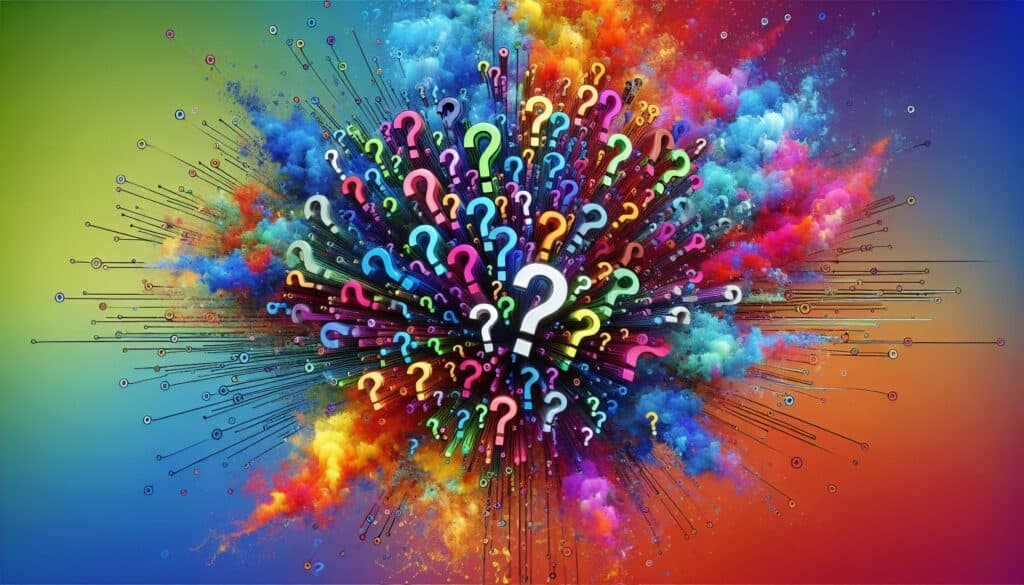Technique de brainstorming visuel qui consiste à générer des questions liées à une nouvelle idée, un nouveau produit ou un nouveau défi avant d'explorer les réponses.
- Méthodologies : Clients et marketing, Idéation, Conception de Produits
Combustion d'étoiles

Combustion d'étoiles
- Remue-méninges, Créativité, Pensée conceptuelle, Idéation, Innovation, Techniques de résolution de problèmes, Gestion de projet, Gestion de la qualité, User-Centered Design
Objectif :
Comment il est utilisé :
- L'idée ou le défi est placé au centre d'une étoile à six branches. Chaque point représente une catégorie de questions (qui, quoi, quand, où, pourquoi, comment). Les participants réfléchissent à des questions pour chaque catégorie.
Avantages
- Assure un examen approfondi d'une idée sous plusieurs angles ; aide à identifier les lacunes ou les problèmes potentiels à un stade précoce ; favorise une compréhension plus approfondie avant l'exécution.
Inconvénients
- Peut prendre du temps si de nombreuses questions sont générées pour chaque point ; nécessite une discipline pour se concentrer sur les questions plutôt que sur les réponses dans un premier temps ; l'efficacité dépend de la pertinence et de la profondeur des questions posées.
Catégories :
- Idéation, Résolution de problèmes, Conception de Produits
Idéal pour :
- Exploration systématique d'une nouvelle idée ou d'un nouveau défi en générant un ensemble complet de questions.
Starbursting est appliqué efficacement dans divers secteurs, notamment la technologie, les soins de santé, les biens de consommation et la conception automobile, facilitant les phases d'idéation et de développement de la conception et de l'innovation des produits. Cette méthodologie est particulièrement utile lors de la phase de génération de concepts d'un projet, au cours de laquelle les équipes sont chargées de définir la portée et la faisabilité de nouvelles idées. Les parties prenantes telles que les chefs de produit, les concepteurs, les ingénieurs et les spécialistes du marketing lancent généralement le processus, garantissant ainsi une discussion bien équilibrée qui intègre des expertises et des points de vue divers. Chaque participant apporte une valeur ajoutée en posant des questions qui couvrent les dimensions de l'étoile, en abordant des considérations essentielles telles que la démographie des utilisateurs, les tendances du marché, les exigences réglementaires, les considérations logistiques et la faisabilité technique. Par exemple, lors de l'élaboration d'un nouveau dispositif médicalPar exemple, la technique du "Starburst" pourrait être utilisée pour s'enquérir des besoins des patients (qui), des fonctionnalités des dispositifs (quoi), des délais réglementaires (quand), des marchés cibles (où), des motivations sous-jacentes au développement (pourquoi) et des contraintes technologiques (comment). Grâce à cette approche structurée, les équipes peuvent mettre en évidence les défis et les opportunités potentiels, ce qui permet une exploration approfondie susceptible de déboucher sur des solutions innovantes en phase avec les besoins des utilisateurs et les demandes du marché. La méthode peut également servir à aligner les différentes parties prenantes du projet, en veillant à ce que toutes les questions pertinentes soient prises en compte avant de passer aux phases de prototypage ou de mise en œuvre, minimisant ainsi le risque de rencontrer des problèmes imprévus plus tard dans le processus de développement.
Principales étapes de cette méthodologie
- Placez l'idée centrale ou le défi au milieu de l'étoile.
- Générer des questions pour la catégorie "Qui" en rapport avec les parties prenantes et le public cible.
- Générer des questions pour la catégorie "Quoi" concernant les détails du produit ou du service.
- Générer des questions pour la catégorie "Quand" portant sur les délais et les étapes.
- Générer des questions pour la catégorie "Où" en se concentrant sur la localisation et la distribution.
- Générer des questions pour la catégorie "Pourquoi" en explorant les motivations et les besoins.
- Générer des questions pour la catégorie "Comment" en identifiant les processus et les méthodologies.
- Examinez et discutez toutes les questions générées pour en vérifier la clarté et la profondeur.
- Identifier les lacunes dans la compréhension ou les domaines nécessitant une exploration plus approfondie.
Conseils de pro
- Encouragez une participation diversifiée afin d'élargir l'éventail des questions, en veillant à ce que des points de vue variés soient pris en compte.
- Documenter toutes les questions générées dans chaque catégorie afin de suivre l'évolution de la réflexion et d'identifier les domaines nécessitant une exploration plus approfondie.
- Revenir régulièrement sur le cadre en étoile au cours du projet pour réévaluer les questions initiales à la lumière de nouvelles découvertes ou de changements.
Lire et comparer plusieurs méthodologies, nous recommandons le
> Référentiel méthodologique étendu <
ainsi que plus de 400 autres méthodologies.
Vos commentaires sur cette méthodologie ou des informations supplémentaires sont les bienvenus sur le site web de la Commission européenne. section des commentaires ci-dessous ↓ , ainsi que toute idée ou lien en rapport avec l'ingénierie.
Contexte historique
1949
1950
1950
1960
1960
1960
1960
1940
1950
1950
1958
1960
1960
1960
1960
(si la date est inconnue ou n'est pas pertinente, par exemple "mécanique des fluides", une estimation arrondie de son émergence notable est fournie)















Articles Similaires
Questionnaires sur les troubles musculo-squelettiques
Tests à plusieurs variables (MVT)
Analyse de régression multiple
Systèmes de capture de mouvement
Méthode MoSCoW
Test de la médiane de Mood